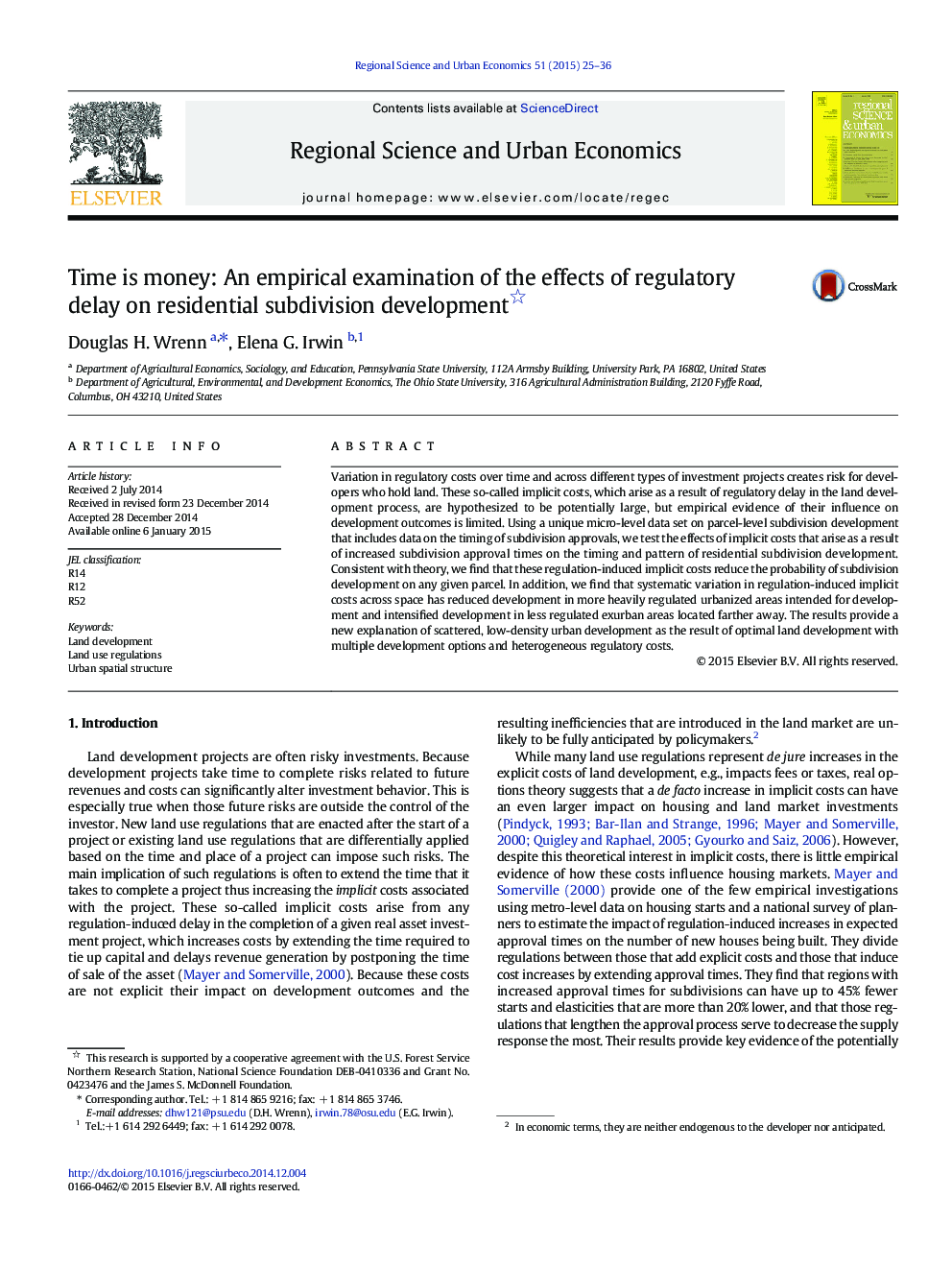| کد مقاله | کد نشریه | سال انتشار | مقاله انگلیسی | نسخه تمام متن |
|---|---|---|---|---|
| 983747 | 1480543 | 2015 | 12 صفحه PDF | دانلود رایگان |
• We look at the impact of regulation on the timing and location of residential development.
• We use data on past approval activity to generate a prediction of expected future approval time.
• Variation in expected approval times across space has exurban development intensified development.
Variation in regulatory costs over time and across different types of investment projects creates risk for developers who hold land. These so-called implicit costs, which arise as a result of regulatory delay in the land development process, are hypothesized to be potentially large, but empirical evidence of their influence on development outcomes is limited. Using a unique micro-level data set on parcel-level subdivision development that includes data on the timing of subdivision approvals, we test the effects of implicit costs that arise as a result of increased subdivision approval times on the timing and pattern of residential subdivision development. Consistent with theory, we find that these regulation-induced implicit costs reduce the probability of subdivision development on any given parcel. In addition, we find that systematic variation in regulation-induced implicit costs across space has reduced development in more heavily regulated urbanized areas intended for development and intensified development in less regulated exurban areas located farther away. The results provide a new explanation of scattered, low-density urban development as the result of optimal land development with multiple development options and heterogeneous regulatory costs.
Journal: Regional Science and Urban Economics - Volume 51, March 2015, Pages 25–36
